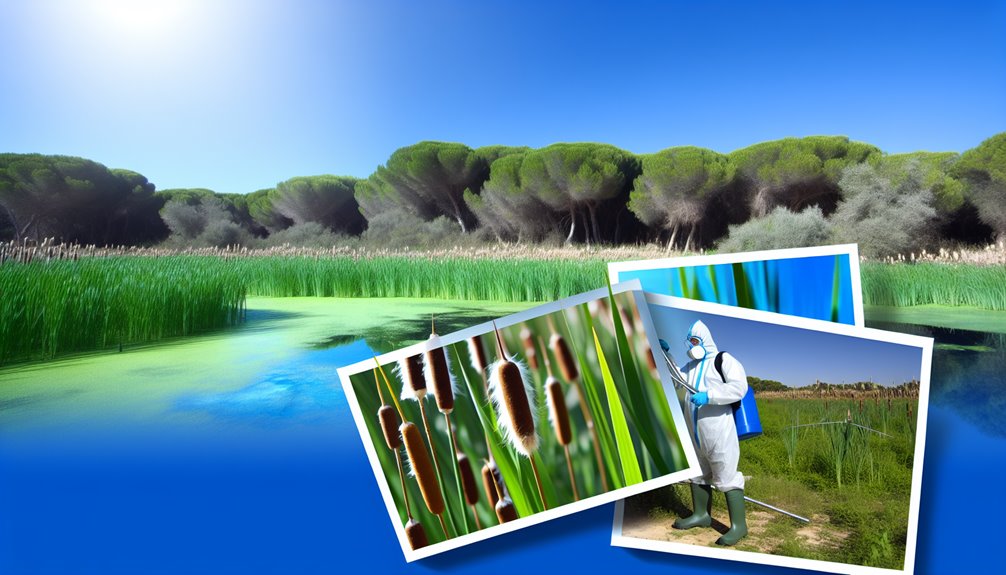You’ve seen how Mississippi’s heat, rainfall, and storm cycles complicate mosquito control, but experience turns that chaos into a plan. With 15+ years in the field, you align tactics with surveillance data, state regs, and species shifts—from Aedes hotspots to Culex vectors. You time larvicides and ULV adulticides precisely, protect pollinators and waterways, and mobilize fast after floods. The payoff shows in metrics, budgets, and public health—but the real test comes when conditions change again.
How Mississippi’s Climate Shaped Our Mosquito Playbook

Because heat and water dictate mosquito biology, Mississippi’s long, humid summers and frequent rainfall shape every control decision you make. You schedule surveillance after storms, calibrate larvicide rates to account for dilution, and time ULV adulticide when temperature inversions favor drift control yet minimize non-target exposure. You plan climate adaptation by mapping flood-prone corridors, rotating biorational actives to manage resistance, and hardening storage for heat stability. You verify residual efficacy with dip counts and landing-rate tests, documenting outcomes for state reporting. You also factor humidity impact into PPE, equipment maintenance, and service windows, prioritizing community protection and regulatory compliance.
Tracking Species Shifts: From Aedes to Culex and Beyond
Those same heat and rainfall patterns don’t just set your schedule—they reshape the species mix you face. You’ve seen Aedes surge after storms, then Culex dominate as standing water ages. Species adaptation isn’t abstract; it’s measurable in trap counts, parity rates, and pathogen testing aligned with state and CDC guidance. You calibrate actions to the mosquito life cycle, adjusting when environmental impacts shift breeding from containers to ditches. With surveillance technology, you confirm changes rather than guess. That discipline protects public health, prioritizing equity and compliance. When species shift, you adapt formulations, timing, and outreach, keeping risk low while respecting regulations and communities.
Data-Driven Surveillance That Targets the Right Places at the Right Time

A data-driven program starts with standardized surveillance that links traps, environmental signals, and case reports to clear decision thresholds. You use data analysis to prioritize neighborhoods, wetlands, and corridors where human risk is real, not assumed. You align collection methods with CDC guidance, QA/QC your counts, and timestamp metadata so trends withstand audits. Then you integrate rainfall, tide, temperature, and health alerts to guide strategic deployment that’s transparent and defensible.
- Define thresholds from historical baselines and confidence intervals.
- Map hotspots using geocoded trap yields and case proximity.
- Calibrate traps and routes weekly.
- Report findings promptly to stakeholders and regulators.
Precision Treatments: Larvicides, Adulticides, and Integrated Tactics
When surveillance flags risk above your action thresholds, you deploy precision treatments that match species, life stage, and habitat while meeting EPA labels and CDC guidance. You start at the source: map breeding sites, confirm species, then select biorational products and release rates that maximize larvicide effectiveness while protecting nontargets. You validate results with dip counts and sentinel sites. For adults, you calibrate equipment, align adulticide timing with crepuscular flight, wind, and temperature, and rotate actives to manage resistance. You document labels, PPE, buffer zones, and droplet spectra. You communicate clearly with residents, prioritize vulnerable settings, and measure outcomes rigorously.
Responding Faster After Storms and Flooding Events

Even before floodwaters recede, you activate an incident-ready protocol that compresses assessment, permitting, and treatment into a 24–72 hour window. You align storm response with state and EPA labels, synchronize with county emergency managers, and verify equipment calibration for accurate ULV outputs. Your flood management playbook prioritizes safety, documentation, and transparent communication with residents.
- Map standing-water hotspots using pre-storm GIS layers and rapid drone recon.
- Pull streamlined permits, confirm buffer zones, and stage larvicides at access points.
- Deploy ground and aerial teams on risk-ranked routes, logging every application.
- Re-inspect within 48 hours, adapt dosing, and report compliance metrics to stakeholders.
Protecting Public Health: West Nile, Zika, and Emerging Risks
Though Mississippi’s mosquito season shifts with weather and habitat, you can cut disease risk by targeting vectors tied to West Nile virus (Culex spp.), Zika and dengue (Aedes aegypti/albopictus), and other emerging threats. Use surveillance-driven larval control, adulticide rotations with resistance monitoring, and container reduction to suppress urban Aedes. Align products and timing with EPA labels, FIFRA, and state guidance; document treatment thresholds and outcomes. Prioritize public awareness and community engagement to reduce breeding sites, encourage repellents, and promote door-to-door education. Track sentinel chickens, human case reports, and climate signals to adjust operations rapidly. Your vigilance protects vulnerable residents.
Partnering With Cities, Neighborhoods, and Homeowners
Because mosquito control succeeds at the neighborhood scale, you’ll formalize partnerships with cities, HOAs, and homeowners to align responsibilities, data, and compliance. You’ll anchor decisions in surveillance metrics, ordinances, and EPA label requirements, then coordinate transparent reporting and complaint resolution. To serve residents well, standardize roles, timelines, and funding so actions withstand audits and public scrutiny. Use community engagement to convert awareness into verifiable participation.
- Map risk, infrastructure, and sensitive sites; prioritize routes.
- Define collaboration strategies, MOUs, and escalation paths.
- Synchronize larval source reduction with inspection schedules.
- Share dashboards, service logs, and findings to guide adjustments and maintain trust.
Sustainable Practices That Safeguard Pollinators and Waterways
While you drive mosquito risk down, you must also protect pollinators and waterways by prioritizing least-toxic, habitat-focused controls and tight application discipline. You start with source reduction: drain containers, repair irrigation leaks, and design swales for water conservation. You deploy larvicides like Bti in mapped catch basins, avoiding bloom times and wind drift. You buffer pollinator habitats by targeting cryptic, shaded resting sites, not flowers. Calibrate nozzles and adhere to label rate, droplet size, and setback language under FIFRA and state rules. You verify efficacy with traps and records, then adjust. You communicate transparently so communities see measurable, compliant stewardship.
Training, Certification, and the Value of a Seasoned Field Team
Every effective mosquito program rests on trained, credentialed people who know the biology, the maps, and the rules. You build trust when your field crews meet certification standards, document decisions, and follow labels and permits without shortcuts. Seasoned techs translate data into safe, lawful actions that protect neighborhoods and habitats.
- Verify credentials annually; align with Mississippi and EPA requirements.
- Drill on vector biology, resistance management, and label literacy.
- Pair rookies with veterans to transfer team expertise and field judgment.
- Audit routes, PPE use, and calibration to keep risk low.
You serve better when training never stops and paperwork proves it.
Measuring Results: Performance Metrics and Cost-Effective Outcomes
Trained teams only prove their worth when the data show it. You track adult trap counts, larval indices, complaint rates, and treatment coverage by zone. You align thresholds with CDC guidance and Mississippi regulations, then verify product labels, droplet spectra, and calibration logs. Your performance evaluation uses pre/post intervention trends, control sites, and weather-adjusted baselines. You link outcomes to budget through cost analysis—dollars per acre treated, per case averted, and per percentage reduction in vector abundance. You publish dashboards, audit routes, and validate GPS records. When metrics drift, you adjust timing, chemistry, or habitat work, protecting communities efficiently and transparently.
Conclusion
At Mosquito Eliminators of South MS, we take pride in our extensive experience in mosquito control, and I want to personally invite you to experience the difference we can make together. Our commitment to protecting your home, your family, and our beautiful Mississippi environment is at the heart of what we do. If you’re ready to reclaim your outdoor spaces and enjoy life without the nuisance of mosquitoes, I encourage you to visit us at mosquitoeliminatorsms.com or give us a call at (601) 336-2277. Let’s work together towards a healthier, more enjoyable outdoor experience!

